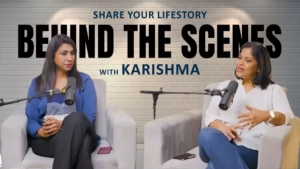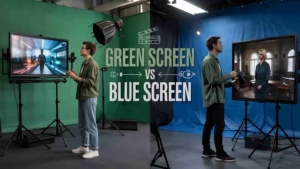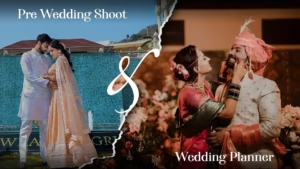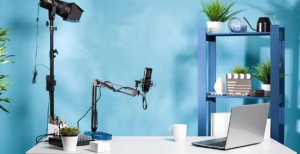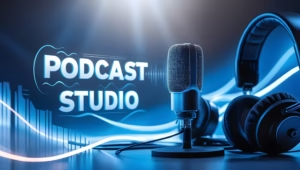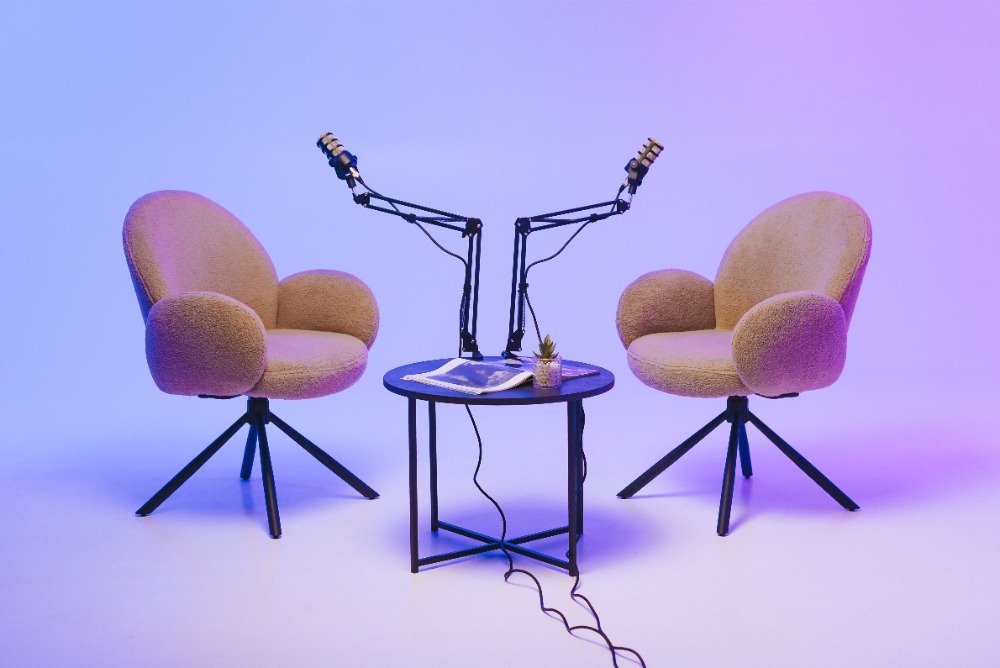Today, 🎙️📡we can find content everywhere for entertainment, learning, news, and stories. But two terms that often confuse people are podcast and broadcast. They sound similar and sometimes even sound the same. But they are quite different in the way they work and the way we experience them. Podcast and broadcast are both ways of sharing audio or video content, but they work very differently.
A podcast to show that anyone can listen to and enjoy anytime over a phone, computer, or tablet at their own convenience. It includes apps like Spotify, Apple Podcasts, or even YouTube. Since the podcast is mostly recorded and white boarded, you are capable of listening to your favorite podcast whenever you deem convenient. Whether walking, traveling, or relaxing, you can just play your episode anytime.
While broadcast are a form of communication where transmission occurs either live or at a fixed time via the medium of radio and TV. One must tune into a particular outlet when the show is slotted to go on air. If, for example, you like a particular FM show usually aired at 7 P.M., you are compelled to listen at that time or you simply lose it. Broadcasts are usually done in case of news, sports events, or television serials in real time.

What Exactly is a Podcast 🎧
Podcasts are internet-based shows that are streamed either as audio or video. They can thus be listened to or viewed at any time and any place. This is like having your trustworthy storyteller or much-trusted expert in your pocket, ready to entertain or educate you on-demand.
Generally, listeners subscribe to a podcast series so that all new episodes can be downloaded automatically. Some are hilarious, some are full of emotions, some give real depth to a subject what truly matters is that you pick any of them according to what fits your mood or interest.
Podcasts are particularly wayward, and this is what draws the crowds. One need not be glued to his TV set or the radio. Just a smartphone or a laptop and you are ready. Podcasts are great for walks, workouts, and relaxing at night.

What is a Broadcast 📻📺
Broadcasts: Now, what can I say about broadcasts? A transmission is a real-time release of audio or video content via radio waves, satellite, or cable. Such an action occurs, for example, when a person turns on their television set at 9 p.m. to watch the news, or tunes into their favorite FM radio station while driving early in the morning – that is a broadcast.
Broadcasts take place according to given fixed schedules. It is necessary for one to be present at that specific time to follow the program aired, otherwise, the person is going to miss it. Some of them happen live or scheduled regularly but few are replayed.
Broadcasts are normally run on TV or radio channels and these run programs which have specific format timings that identify when they are going to come on air at the same time across many listeners to most mainstream topics like current affairs, music, and entertainment.
Who Creates Them and How? 👩💻🎥
Podcasts and broadcasts are very different in almost every respect: Who makes them and who makes them.
Anyone could produce a podcast. Podcasters can take any number of forms: students, educators, comedians, entrepreneurs, or even just a room’s worth of sound equipment – the medium has no boundaries in terms of creativity. There aren’t large budgets or professional studios that need to be reserved for a good podcast just an idea, a mic, and a site where they can upload it.
All interviews sit in the purview of organizations. Big news channels, the national radio networks, entertainment networks. Teams of writers, producers, editors, and presenters conspire to produce it. Everything is very structured and mostly following the industry rules and standards.

Timing and Flexibility ⏰
Podcasts are, all put in comparative contrast to audience access to broadcasting be “either”, indeed the most spontaneous form in which people may be able to choose. You make the call to press play whenever you choose it, whether it’s 3 a.m. or 3 p.m. It would always be there for listeners with a favorite episode, waiting to be enjoyed.
Air time is set. Your favorite radio program comes on at exactly 7 p.m., and you have to tune in at that hour. Miss this point, and you’ve probably blown your chances. That’s why a lot of people feel podcasts give them a little more leeway and an easy way to work them into a hectic schedule.
How We Access Them 📱💻📺
Podcasts are quite popular among the modern youth and young adults. You will find Podcasts hosted in sites like Spotify, Apple Podcasts, Google Podcasts, or even YouTube. All you need to do is tap it, download it, and listen. Some come audio only, some video versions also.
Broadcasts are on radios and televisions. You need to have a working TV with an antenna or a radio set or listen through cable or satellite to get tuned in.
So if you’re traveling and love to catch up on what’s being said, podcasts are your thing; otherwise, you prefer sitting back in the comfort of your home and watching or listening to properly scheduled programs-catch broadcasts.
Style and Presentation 🎤📡
Podcasts sound like casual and very personal conversations. It’s almost as if one is talking to a friend. It can be replete with unscripted jokes and emotions. The ambiance is very relaxed, allowing the listeners to get more with the host.
Broacasts, on the other hand, are sleek and polished. Anchors and presenters read scripts as they go onto their airwaves in formal tones and established guidelines. There is minimal room in making mistakes and it is well organized before going live.

Audience and Reach 🌍
Podcasts are mostly intended for niche audiences. A show dealing with fitness will attract health-oriented listeners, while a podcast covering space science will attract interested learners. It is specific and focused.
Broadcasts are meant for large, general audiences. Radio and television shows would cover topics with mass appeal news, popular music, politics, and general entertainment.
It relates to advertising as well. Ads in podcasts usually operate on personalization and relevance to the topic. Ads in broadcasts, however, are general in nature and meant for mass appeal.
Freedom vs Regulation ⚖️
While trends and changes come and go, podcasting is still in its infancy with only about 27 years of existence and is presently enjoying a wider margin of freedom. There are not many rules; opinions can be freely expressed without further restriction, and controversial or creative matters can be addressed. It is this reason alone that you will come across podcasts that discuss mental health, taboo issues, alternative lifestyles, and so on.
Broadcasting on national channels observes tight regulations. To put it simply, everything is run through the broadcasting authority and anything that is considered inappropriate can be flagged or shut down. In as much as this ensures professionalism, it also stands to infringe on the rights to free expression.
Can They Work Together? 🤝
Yes, and in fact many do! Some radio programs publish podcasts, so if listeners miss the actual radio broadcast, they can attend later. Similarly, very popular podcast episodes can be converted to television or radio versions.
This hybrid model is good for both worlds. It enables creators to reach larger audiences while offering the audience some flexibility and choice.
Audience Experience: Who’s Listening or Watching?
Podcasts Target Specialized Audiences
Most of the podcasts address certain interests. Whether you like comedy, entrepreneurship, spirituality, or self-help, there is a podcast for you. This allows the podcast listener to connect more deeply, to engage with, and to really feel loyal to the content.
Broadcasts, on the other hand, address mass audiences.
Podcasts create community atmospheres around the interests they broadcast.
The purpose of broadcasts is to reach the largest possible amount of people, all at the same time. The news, the weather update, prime-time serials, or nation-wide radio shows all of these are directed to the general public. Most of these shows stick to topics that appeal to mainstream culture and a wider audience.
Conclusion: Two Different Roads, Same Destination 🎯
So, the practical definition of a podcast as opposed to a broadcast: Consider the hows and whens of your listening, who the creator of that content is, and finally, the platform upon which it is shared. Flexible, informal, and personal: that is the podcast. Professional, structured, and live: that is the broadcast.
Podcasts equal freedom. Broadcasts equal tradition.
Neither is better than the other; they simply cater to different needs and moods. Today, you might require that news anchor structure; tomorrow, that warm, fuzzy kitchen-table feeling of your favorite podcast.



